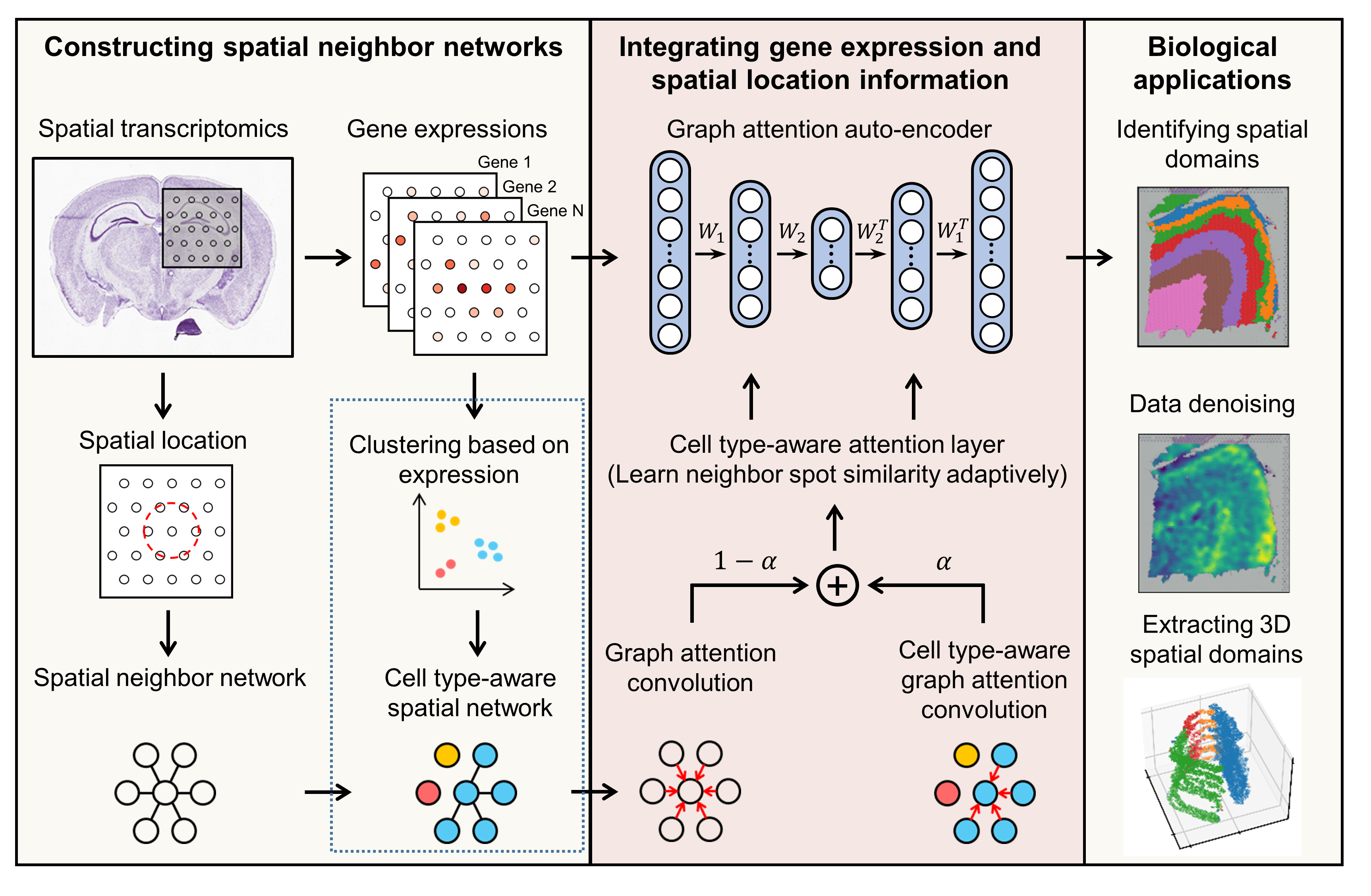STAGATE – deciphering spatial domains from spatially resolved transcriptomics
- Installation (tensorflow1 framework)
- Installation (pyG framework)
- Tutorial 1: 10x Visium (DLPFC dataset)
- Tutorial 2: The usage of cell type-aware module for 10x Visium
- Tutorial 3: Slide-seqV2 mouse olfactory bulb
- Tutorial 4: Stereo-seq mouse olfactory bulb
- Tutorial 5: 3D spatial domain identification
- Tutorial 6: Denoising
- Tutorial 7: Slide-seqV2 mouse olfactory bulb (pyG framework)
- Tutorial 8: Batch training strategy (pyG framework)
- Tutorial 9: ISH-based STARmap dataset
- Additional Tutorial 1: Work for multiple sections (without batch effects)
- Additional Tutorial 2: Work for multiple sections (STAGATE + Harmony)

News
2022.03.05 STAGATE based on pyG (PyTorch Geometric) framework is availble at STAGATE_pyG (https://github.com/QIFEIDKN/STAGATE_pyG).
Benefit from the optimization of the pyG package for training graph neural networks, it is more than 10x faster than STAGATE based on the tensorflow1 framework, and can use a batch training strategy to deal with large-scale data (See Tutorials 7 and 8 for details).
The cell type-aware module has not been supported by STAGATE_pyG yet.
Introduction
STAGATE is designed for spatial clustering and denoising expressions of spatial resolved transcriptomics (ST) data.
STAGATE learns low-dimensional latent embeddings with both spatial information and gene expressions via a graph attention auto-encoder. The method adopts an attention mechanism in the middle layer of the encoder and decoder, which adaptively learns the edge weights of spatial neighbor networks, and further uses them to update the spot representation by collectively aggregating information from its neighbors. The latent embeddings and the reconstructed expression profiles can be used to downstream tasks such as spatial domain identification, visualization, spatial trajectory inference, data denoising and 3D expression domain extraction.
Citation
Dong, Kangning, and Shihua Zhang. “Deciphering spatial domains from spatially resolved transcriptomics with an adaptive graph attention auto-encoder.” Nature Communications 13.1 (2022): 1-12.